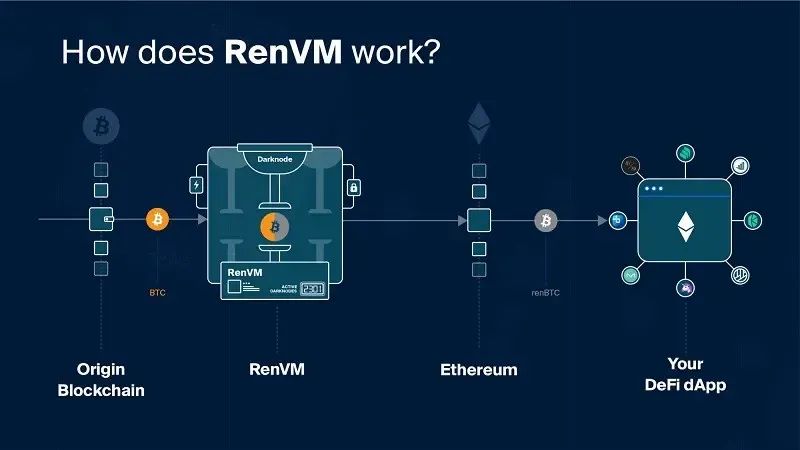Ren, RenBridge, and RenVM: Everything you need to know

It is hard to talk about the booming decentralized finance (DeFi) sector without mentioning wrapped Bitcoin implementations. Ren Protocol and REN token is one of the various projects providing interoperability between different blockchains via cross-chain bridges. Notably, their tokenized Bitcoin, renBTC, is widely adopted across various dApps and DeFi products.
Ren Explained
If you want to understand how Ren works quickly – it is a pretty big rabbit hole. The blockchain technology powering Ren is quite difficult to wrap your head around. We will explain in layman’s terms how RenBridge works and how its flagship product RenVM operates. Along with discussing the use cases for REN token.
How does RenBridge work?
Before we jump into Ren, we need to quickly go over what a darkpool is. Essentially, Darkpools are Over-The-Counter markets that enable investors to purchase large amounts of a crypto-asset anonymously. These do also exist in centralized traditional markets, but in that case, you have to trust that the centralized party will keep your transaction secure and anonymous.

Ren allows for the cross-chain transfer of cryptocurrency assets, which it keeps decentralized and trustless via darkpools.
You May Also Like:
- What is Darwinia Network? Cross-chain transfers made easy
- What is Strudel Finance? One way BTC to ETH bridge
- What is Kava? A Cross-Chain DeFi Platform
It does this with its flagship product the Ren Virtual Machine (RenVM). RenVM uses a network of Darknodes, who provide the computing power needed to identify and execute cross-chain crypto transfers.
Even the darknode providers themselves have no idea where the crypto is going or what the amount is. By using an algorithm, known as Shamir’s Secret Sharing Scheme, which fragments up the orders securely.
How does RenVM work?
As RenVM exists on Ethereum, what actually happens is users mint the corresponding ERC20 asset on the Ethereum blockchain. To summarise, you don’t really move your Bitcoin or Zcash on to Ethereum’s network.

Instead, the token version of these cryptocurrencies is minted and burned depending on how much of the asset is being held or released from the RenVM.
What is REN Token used for?
According to the whitepaper, REN token has two use cases within the ecosystem. Firstly, it incentives the node operators to match and complete orders. Secondly, if you want to operate a darknode then you have to pay a bond in REN to register your node.
- Fees: A percentage of the the paid fees for using RenBridge go to node operators, which is in REN tokens.
- Bonds: The Registrar is the name of the REN Protocol’s smart contract which organizes network nodes. To prevent bad actors spamming the renVM, to register a darknode, the pool operator must pay a bond in REN tokens.
REN continues to grow
As DeFi products continue to see parabolic rises in demand, more investors are looking to use their existing BTC holdings for profitable farming opportunities. Over 131,000 BTC already exists on the Ethereum network, and most of that was minted in the last 2 months. While BitGo’s WBTC does hold a lion’s share, renBTC is sitting in the second position. Furthermore, RenBridge’s adoption continues to grow as users prefer its decentralized approach over WBTC.

REN token is now up by over 500% for the year, and regularly saw price surges of 245% during August 2020. As DeFi products continue to grow and given that RenVM will continue to add new assets in the future, this current growth only stands to continue.
